Read on to learn the differences between Vinyl Vs. Laminate Flooring, plus some pros and cons that will help you choose between the popular flooring options.
Vinyl Vs. Laminate Flooring: in contrast to laminate, most vinyl floors are waterproof or water-resistant. This means that vinyl flooring can be installed almost anywhere, whereas laminate isn’t the best option for rooms that are prone to moisture, like bathrooms or kitchens.
For more details, please keep reading.
What is Vinyl Flooring?
A resilient and waterproof floor is created from layers of vinyl flooring. Its solid vinyl core is topped with a printed vinyl layer and a wear layer. Because water can remain on surfaces for a long time without harming them, these synthetic materials help to improve your floor’s resistance to moisture. The many varieties of vinyl flooring available to homeowners include vinyl planks, WPC vinyl, and rigid core vinyl.
Vinyl flooring used to be limited in design choices, but vinyl has been upgraded to a variety of styles and patterns for a more modern and attractive look. Vinyl flooring provides a little more design variety than laminate flooring; it can resemble not only wood floors but also stone and ceramic floors.
Here are some pros and cons of vinyl flooring:
| Pros | Cons |
| Easy DIY installation for most homeowners | Some types of vinyl can be difficult to install on your own |
| Durable and lasts for decades | Heavy appliances can cause dents |
| Made of 100% waterproof materials |
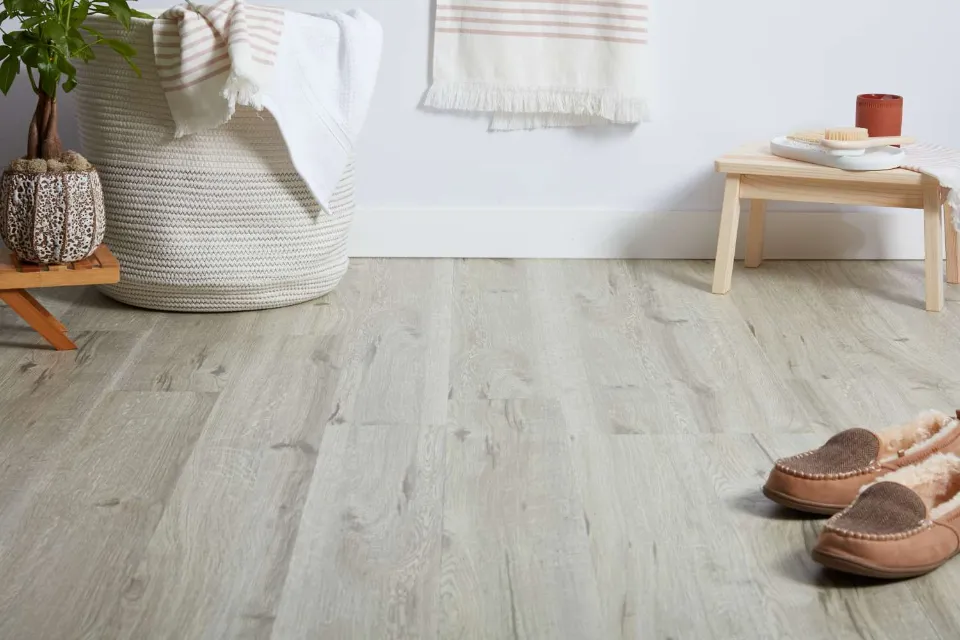
What is Laminate Flooring?
Laminate flooring, one of the earliest man-made alternatives to hardwood floors, was first produced in the 1970s. It’s a great option for homeowners who like the look of hardwood floors but don’t want to spend a lot of money on flooring materials. It can be used in living spaces and hallways because of its thick composition, which is fairly comfortable to walk on.
The same synthetic materials that are used to make vinyl and laminate to replicate the appearance of real hardwood are used. Laminate layers are similar to vinyl flooring but made of different types of materials. Laminate flooring has an inner core board, which is layered with a decorative photo image and topped with the wear layer or “overlay” to protect your floors.
Unfortunately, laminate flooring is not as resistant to moisture as vinyl is. Even though some options for laminate flooring are water-resistant, they can still sustain damage from prolonged water exposure.
Check out some pros and cons of installing laminate flooring:
| Pros | Cons |
| Affordable | May need to be replaced within 10 years |
| Comfortable on the feet | Not all types are water-resistant |
| Realistic wood appearance |
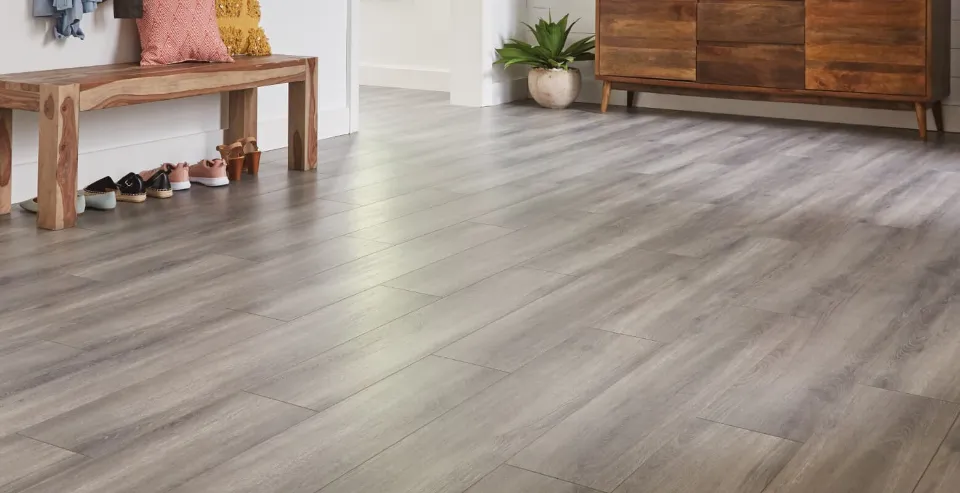
Key Differences: Comparing Vinyl Vs. Laminate Flooring
- Vinyl Flooring
Although vinyl flooring may appear to be a solid, uniform material, it is actually a layered product, similar to laminate flooring. Vinyl flooring is made up of at least four layers. A high-definition photographic layer is immediately beneath the clear wear layer at the top. A thick core layer forms the majority of the flooring, and at the bottom is a soft foam layer.
- Laminate Flooring
The layers that make up laminate flooring range from four to five. The lower image layer, which contains a photographic image of stone or wood, is shielded by a clear wear layer at the top. After the high-density fiberboard, or HDF, which makes up the majority of the product, comes a thin layer that is impact-resistant. Soft foam or, with some laminates, a layer of backer paper make up the final and lowest layer.
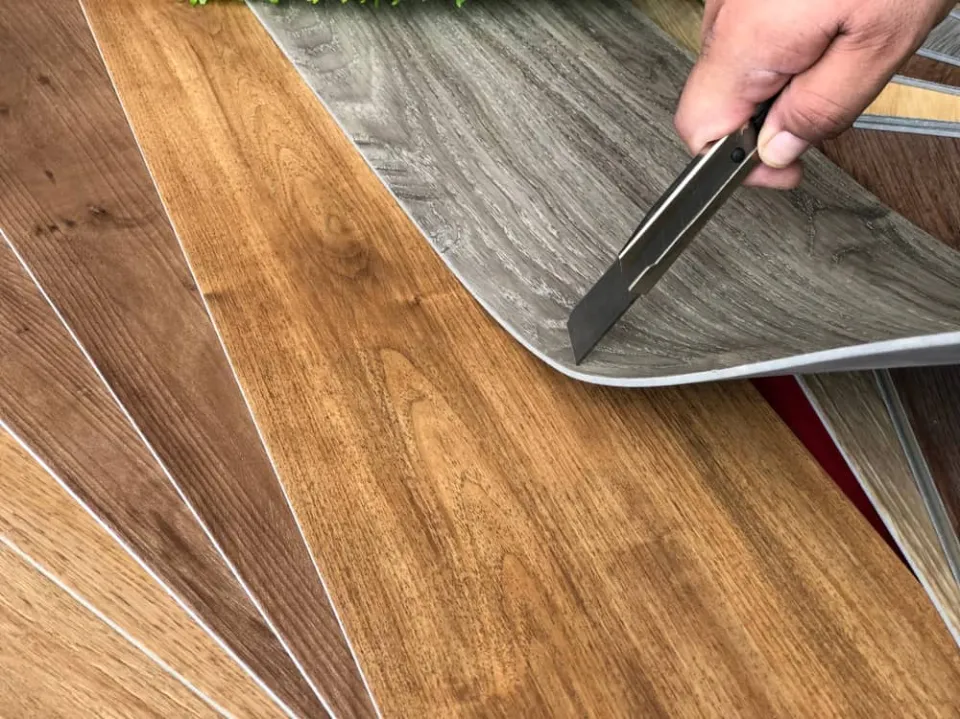
Which Flooring is Best?
Here is a specific comparison about Vinyl Vs. Laminate Flooring:
Appearance and Comfort
- Vinyl Flooring
The hard, clear wear layer of higher-quality vinyl plank and tile flooring is topped with an image or photo layer. This image is usually of a wood species (for example, oak, maple or hickory) or, less commonly, stone.
However, not all vinyl flooring has a realistic appearance. Older and lower-priced sheet and tile vinyl flooring is printed with a rotogravure process (like a cylindrical printing press) and topped with a clear wear layer.
- Laminate Flooring
All laminate floors simulate real wood or stone using a high-definition photographic layer placed below the wear layer.
Laminate flooring’s standout feature is its appearance. Laminate flooring is available in almost every color, species, and style of real wood and stone flooring, including hand-scraped, rustic, reclaimed wood, multi-tonal, natural finish, whitewashed, multi-length, and many more.
Maintenance and Care
Starting with dry cleaning techniques, such as using a vacuum, brush, broom, or dust mop, is recommended for both vinyl flooring and laminate flooring. To pick up embedded dirt, damp mopping with a neutral detergent is usually all that is needed.
Wet mopping is one area where laminate flooring and vinyl flooring diverge. Wet mopping can sometimes be the simplest method of cleaning a floor that is particularly dirty. Unlike laminate flooring, vinyl flooring can be wet mopped.
Durability and Longevity
Vinyl and laminate are both strong, long-lasting flooring options with comparable entry-level costs. Each’s lifespan ultimately depends on the caliber of the material you pick, whether it was installed correctly, and how much traffic it sees over time.
- Laminate
Despite being a sturdy and long-lasting flooring option, laminate is susceptible to serious damage from prolonged moisture or humidity exposure. Additionally, laminate floors cannot be sanded or refinished; as a result, if they sustain water damage or are severely scratched, they cannot be repaired. The average laminate floor can last between 10 and 20 years, but how well it is taken care of has a big impact on how long it will last. Some may find they need to replace laminate flooring by the 10-year mark.
- Vinyl
The majority of vinyl flooring options available today can withstand kids, pets, high traffic areas of the home, and everyday wear and tear. However, over time, vinyl of lower quality may peel and delaminate. Choosing a high-quality vinyl plank with a thick wear layer, which can last up to 25 years with proper maintenance, will help you avoid this. Because most vinyl flooring options are 100 percent waterproof, it can also stand up to water exposure without any issues.
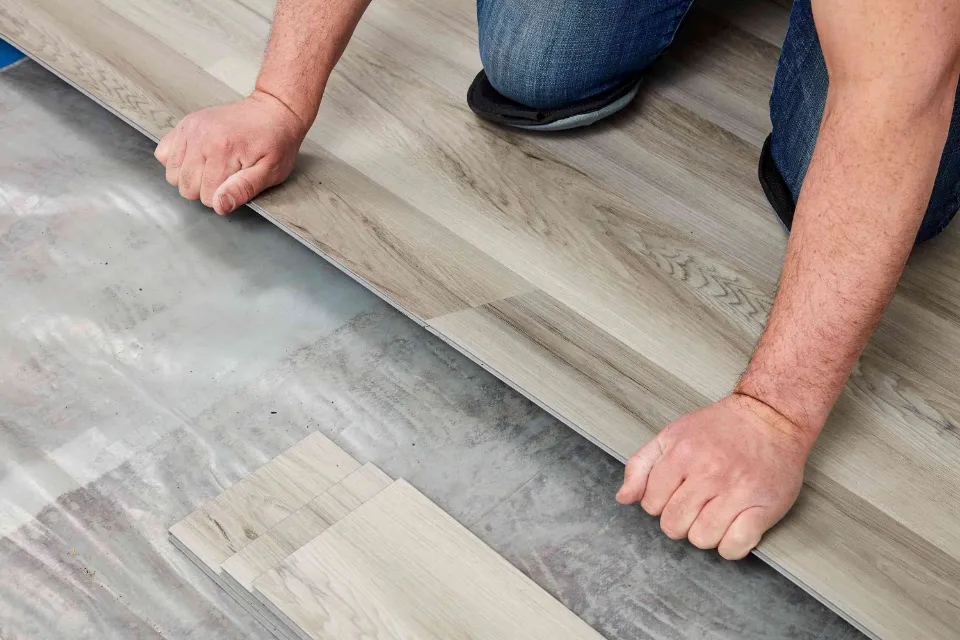
Cost
- Vinyl Flooring
Vinyl flooring ranges from about $0.60 to $4.00 per square foot at discount stores. Sheet vinyl can be as cheap as $0.50 to $2.00 per square foot. But the low cost of sheet vinyl is often balanced out by the cost of installation. While sheet vinyl frequently requires professional installation, plank and tile vinyl can be installed by do-it-yourselfers.
- Laminate Flooring
Laminate flooring ranges in price from $0.50 to $3.00 per square foot at discount flooring stores. Name brand laminate flooring begins at around $3.00 per square foot and ranges up to about $5.00 to $8.00 per square foot for textured 12-mm-thick planks.
For name brand laminate flooring installed by professionals, expect to pay about $6 and up per square foot, on average.
Installation
- Vinyl Flooring
Installation of vinyl flooring is simple. It can either be loose-laid or glued to the subfloor. Vinyl flooring that has been glued can be found as tiles or planks with a liquid adhesive or a self-stick adhesive backing. As the planks are attached side-to-side rather than to the subfloor, loose-lay vinyl flooring is also referred to as a floating floor.
- Laminate Flooring
All laminate floors are floating floors. Planks fasten side-to-side, just like vinyl flooring. It cannot move because of the floor’s weight and friction. Similar to vinyl flooring, laminate flooring can be easily cut by scoring it with a utility knife and snapping it off.
Water, Heat and Environment
- Vinyl Flooring
From top to bottom and on all edges, vinyl flooring is completely waterproof. When dried after being wet, vinyl flooring will keep its shape and appearance.
Heat can have an impact on plastic, including vinyl flooring. But the heat requirements that the majority of vinyl floors must meet are typically much higher (158 Fahrenheit) than what is reasonable for daily use.
- Laminate Flooring
Laminate flooring is especially brittle when exposed to water because of its wood-based core. Water that is allowed to pool on the surface—near open seams or the edges—can work its way below and into the core. It will be absorbed by the core. The core won’t shrink back to its original size after drying. Most laminate flooring installed over concrete must also have a vapor barrier to prevent moisture vapor from penetrating the laminate.
The high-density fiberboard core of laminate flooring is usually unaffected by heat. However, some layers, like the top wear layer, may melt in extremely hot conditions. Like vinyl flooring, though, these temperatures far exceed those found in most homes.
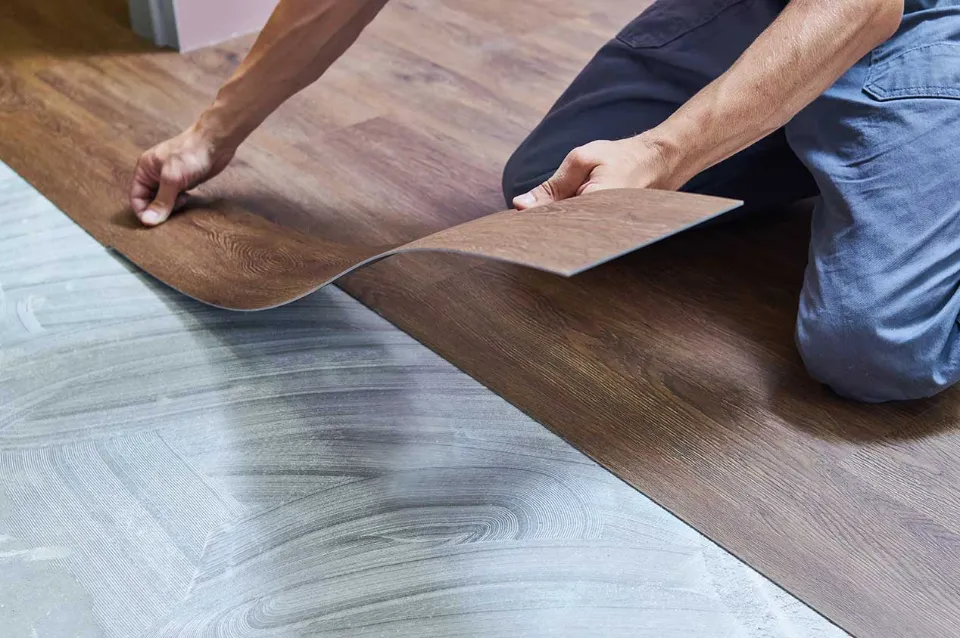
Resale Value
Your floors are a significant feature of your home, and choosing the right material can be an investment opportunity to boost your home’s resale value. The type of flooring you select ultimately determines whether your floors will increase the resale value of your house, even though proper installation, diligent maintenance, and the quality of the material you select are important factors.
- Laminate
While higher end types of laminate flooring can increase the value of your home to a degree, the increase will generally be minimal due to the lower price point of laminate. If you want to increase the odds of boosting your property value, laminate flooring should be relatively new and regularly maintained in order to keep it in good condition.
- Vinyl
It is possible to create authentic-looking floors that feel opulent and entice potential homeowners thanks to vinyl’s ability to mimic the appearance of natural stone and hardwood. Though lower-quality vinyl floors probably won’t add much to the value of your home, high-end luxury vinyl flooring can add a respectable amount to a home’s resale value.
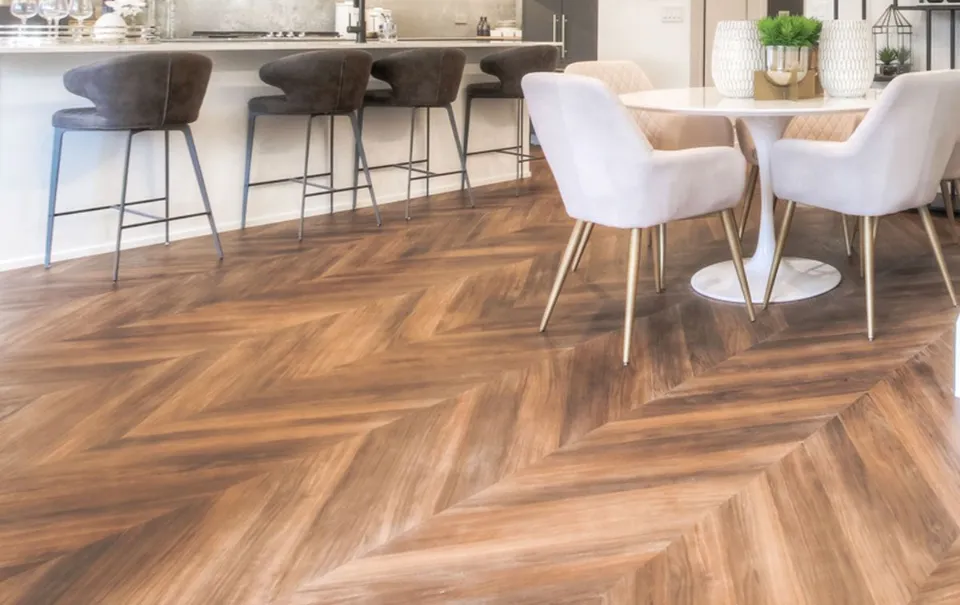
FAQs
What is Cheaper, Laminate Or Vinyl?
Despite sheet vinyl occasionally being slightly less expensive, vinyl and laminate flooring are priced similarly. Alternatives made of luxury vinyl may cost significantly more than laminate.
Which Lasts Longer, Vinyl Or Laminate?
When maintained properly, laminate and vinyl flooring have lifespans that are comparable, but vinyl flooring is thought to be more resilient, which may ensure a longer lifespan for many users.
Which is Better for Pets, Vinyl Or Laminate Flooring?
Vinyl flooring is superior to laminate when it comes to pets. This is because vinyl is entirely made of synthetic materials, making it waterproof.
Which is More Scratch Resistant, Laminate Or Vinyl?
The top layer of LVT and LVP may be more prone to tearing, but vinyl flooring is more scratch resistant than laminate flooring.
Summary: Which One is Better for You?
There is no difference between laminate and vinyl flooring in terms of quality. The best spaces for vinyl flooring are mudrooms, wet bathrooms, and laundry rooms. If you’re installing flooring in those spaces, you should probably go with vinyl because it resists moisture. Laminate flooring is practical and generally more attractive in dry areas. With laminate flooring, buyers typically have more design options than with vinyl flooring.
If you have any questions, please leave a comment. My Prime Home tries to give you the best home improvement information. Don’t forget to share the post. Thank you for reading.
Read about



